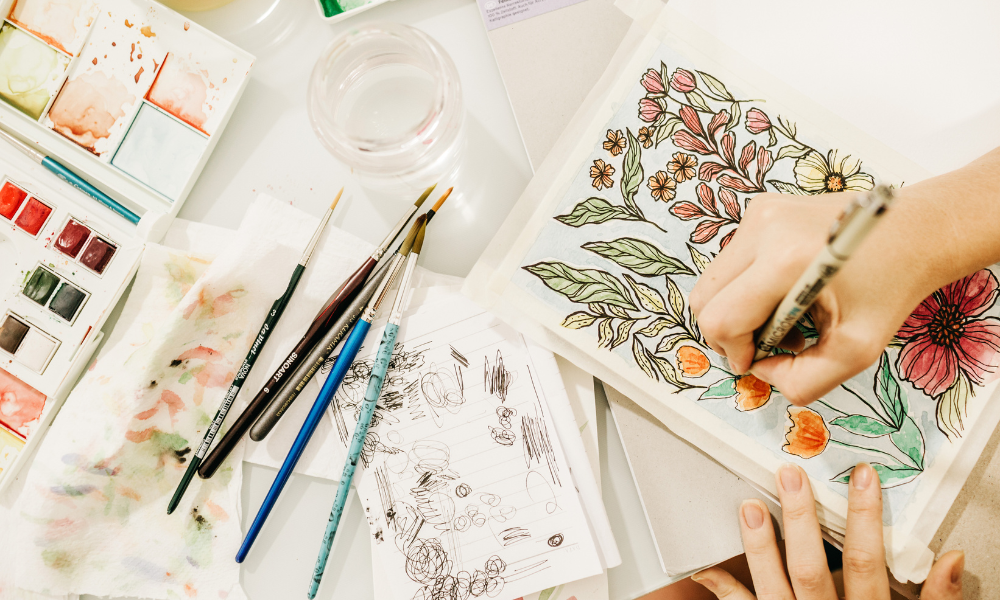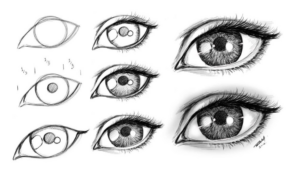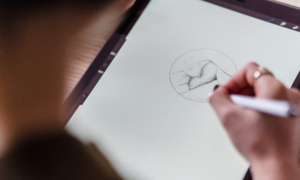The sketchbook. A portal to creativity, a playground for ideas, and a silent witness to your artistic journey. But for many, that initial excitement of a fresh sketchbook can quickly fizzle out, leaving behind a daunting expanse of blank pages. Fear not, fellow artist! Here’s a comprehensive guide to maintaining your sketchbook habit and turning it into a wellspring of inspiration and growth.
Finding Your Perfect Sketchbook
The first step is choosing a companion that sparks joy. Consider size and portability – will you carry it around or keep it at home? Opt for thicker, acid-free paper if you plan on using watercolors or wet mediums. Experiment with different binding styles – spiral-bound for flexibility, hardcover for durability, or a simple pamphlet stitch for a rustic charm. There are even sketchbooks specifically designed for specific mediums, like toned paper for charcoal or multimedia journals.
Embrace the Imperfect
A common hurdle? Perfectionism. Remember, your sketchbook is a safe space to experiment, explore, and make mistakes. Don’t get bogged down in creating finished pieces. Embrace the freedom of quick sketches, messy lines, and unexpected outcomes.
Developing a Sketching Routine
Consistency is key. Aim for short, daily sessions, even if it’s just 10-15 minutes. This could be during your morning coffee, on your commute, or before bed. Setting aside dedicated time helps build the habit and keeps you engaged.
Conquering the Blank Page
Facing an empty page can be paralyzing. Here are some strategies to get those creative juices flowing:
- Theme Days: Pick a daily theme – textures, hands, portraits, urban scenes – and focus on variations within that theme.
- Carry a List: Keep a running list of things you want to draw – objects, scenes, creatures. Refer to it when inspiration wanes.
- Time Challenges: Set time limits for your sketches. Short bursts can be surprisingly productive and help you loosen up.
- Mindfulness Drawing: Focus on what you see and feel in the moment. Draw a cup of coffee, a flower on your desk, the view from your window.
Embrace Experimentation
Don’t be afraid to step outside your comfort zone. Try new techniques, mediums, and subject matter. Explore mixed media – incorporate collage elements, inks, watercolors, or markers. Sketch from life, reference photos, or even other artworks. The more you experiment, the more you’ll discover what excites you.
Keeping it Inspiring
Surround yourself with inspiration. Follow artists you admire online, visit museums, or browse through art books. Take note of techniques, compositions, and styles that resonate with you. Dedicate a few pages in your sketchbook for inspiration – collect quotes, color palettes, or interesting textures you encounter.
Documenting Your Progress
Date your sketches. Looking back and seeing your improvement over time is incredibly motivating. You might even dedicate a few pages to tracing or redrawing older sketches to see how your skills have evolved.
The Power of Mistakes
Don’t be afraid to embrace mistakes. Instead of erasing everything, use them as a springboard. Let happy accidents inform your composition. Draw over mistakes, create textures from them, or use them as starting points for new ideas.
Beyond Drawing
Sketchbooks are not limited to drawing. Use them for brainstorming, mind maps, color studies, or even writing down creative ideas.
Making it Social
Share your sketchbook journey with others! Join online communities, participate in sketchbook prompts, or start a sketchbook exchange with friends.
The Joy of Looking Back
Revisiting old sketchbooks can be a treasure trove of memories and artistic growth. See how your style has evolved, what techniques resonated with you, and subjects that captured your interest.
Most Importantly, Have Fun!
Remember, the sketchbook is a playground for your creativity. Don’t get bogged down by expectations. Embrace the joy of creating, making mistakes, and exploring new ideas. Let your sketchbook be a testament to your artistic journey, a space where you can truly be yourself and create freely.
Bonus Tips:
- Invest in good quality tools: Sharpen your pencils, keep your erasers clean, and experiment with different mediums to find what works for you.
- Organize your sketchbook: Use page markers, dividers, or a color-coding system to easily find specific sketches.
- Take care of your sketchbook: Avoid spills, store it flat, and don’t be afraid to add a personal touch with stickers or washi tape.
- Reward yourself: Celebrate milestones, like filling a sketchbook, by treating yourself to new art supplies.
Maintaining a sketchbook isn’t just about drawing; it’s about nurturing creativity, honing skills, and capturing moments of inspiration. By choosing the right materials, establishing a routine, experimenting freely, and reflecting on your progress, you can make your sketchbook a powerful tool for artistic growth and self-expression. Embrace the journey, and let your sketchbook be a testament to your creativity and imagination.
In essence, your sketchbook is more than just a collection of drawings—it’s a visual narrative of your artistic evolution. Treat it with care, use it often, and watch as it becomes a cherished companion on your creative path.




